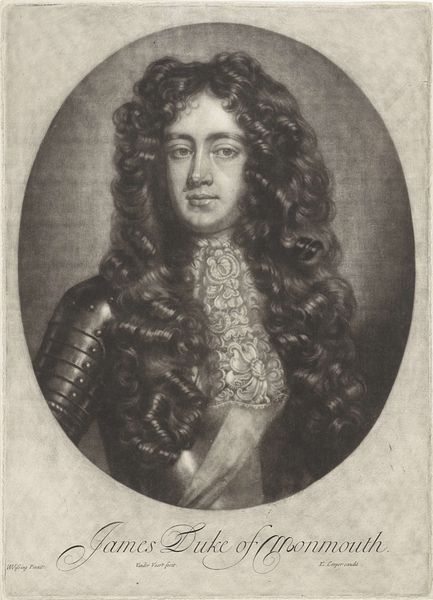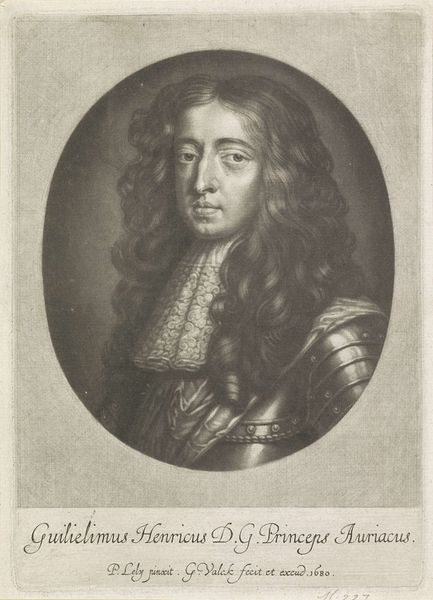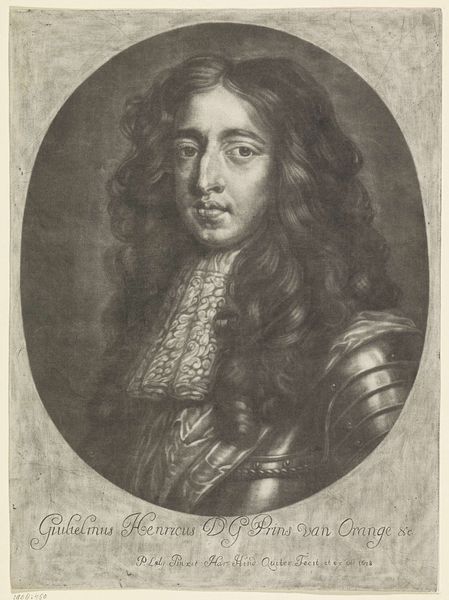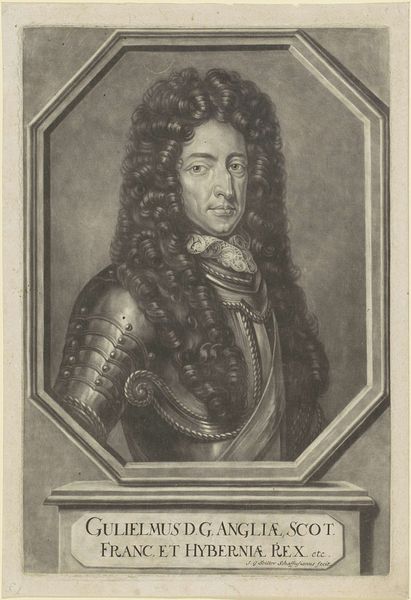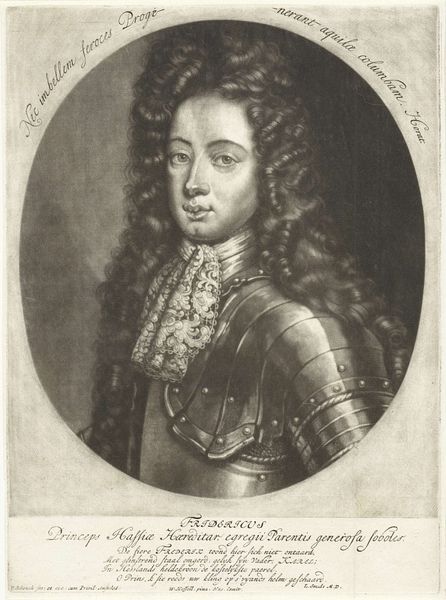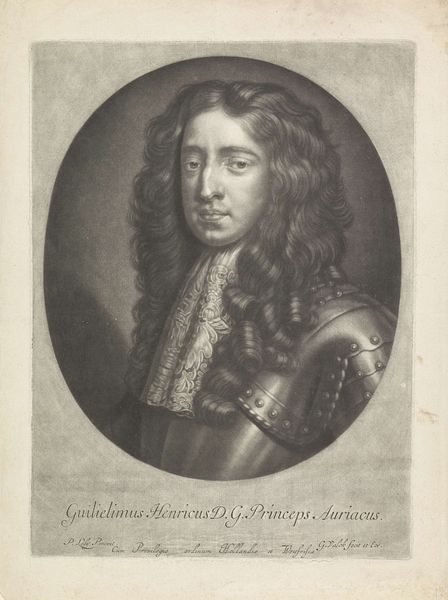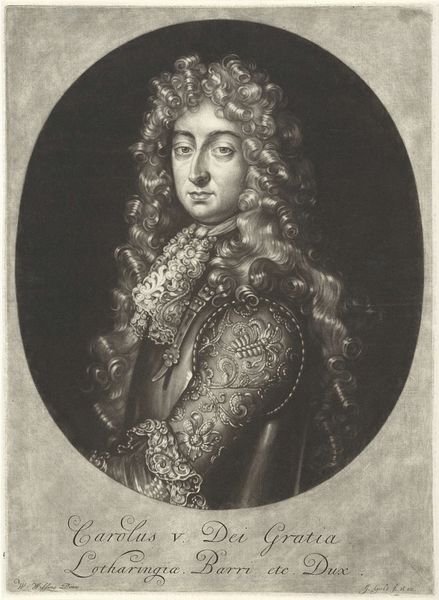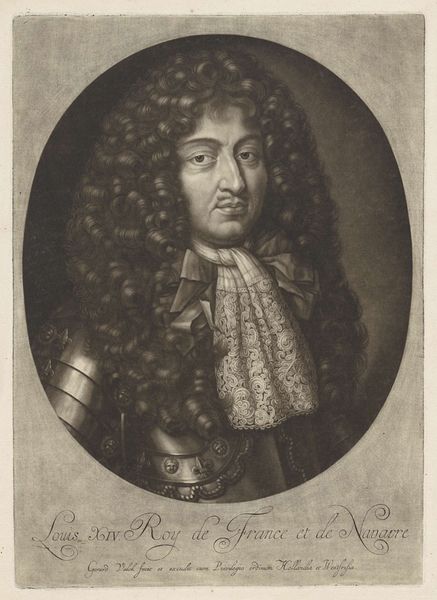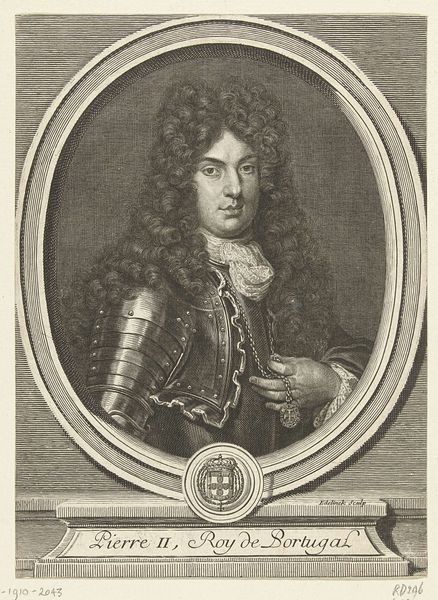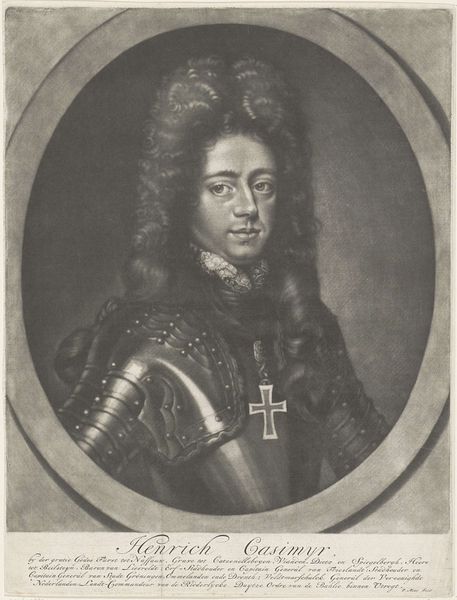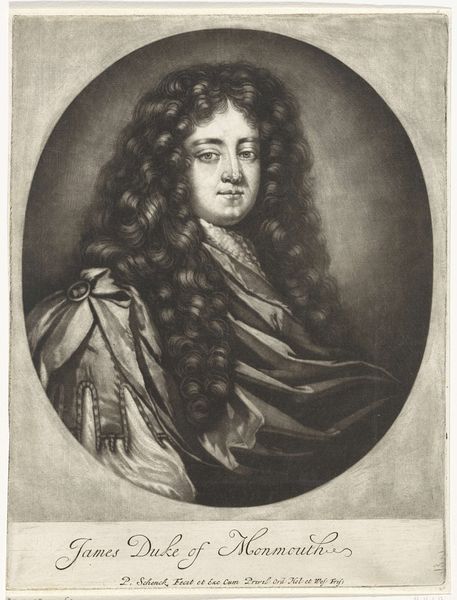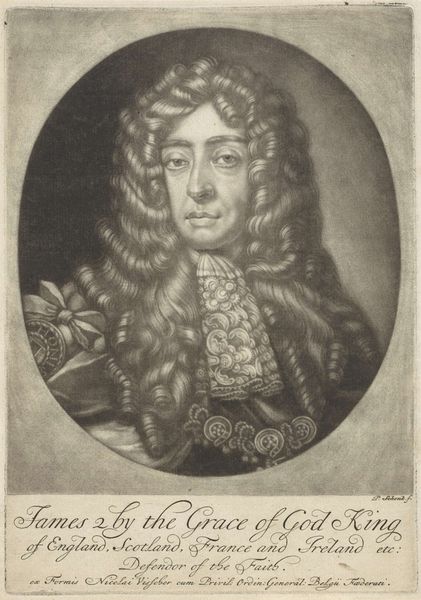
print, engraving
#
portrait
#
baroque
# print
#
old engraving style
#
figuration
#
pencil drawing
#
history-painting
#
engraving
Dimensions: height 248 mm, width 181 mm
Copyright: Rijks Museum: Open Domain
Curator: It has a sort of understated grandeur, wouldn’t you say? Editor: The texture of the engraving jumps out at me first. You can almost feel the pressure of the burin on the plate. Curator: Indeed. What we are looking at here is a print, an engraving to be precise, depicting Henry Fitzroy, the Duke of Grafton. Pieter Schenk executed this piece sometime between 1670 and 1713. It’s part of the Rijksmuseum collection. Editor: An engraving, you say? So it’s about reproduction, making this image available to a wider audience, which speaks volumes about Grafton's standing in society. Was he popular, or was this about cementing his image? Curator: That's an interesting question. Grafton, being the illegitimate son of Charles II, walked a fine line between royal favor and social stigma. Disseminating his portrait could definitely be seen as a way to normalize and solidify his position, particularly among those who might have questioned his legitimacy. He achieved military and political prominence. Editor: Right, that’s reflected in the armor. There’s a certain craft to making armor, not just its functionality, but the artistry of it. But, reproduced through print, it shifts its meaning; what was once functional metal is now flattened into mere image, readily consumed. Curator: Precisely. The engraving itself is indicative of the era. Baroque portraiture aimed to project power, status, and an idealized likeness. Schenk cleverly uses light and shadow to enhance Grafton's features, presenting him as both noble and commanding. Consider how such images reinforced hierarchical structures. Editor: But is the work successful in projecting authority? Look at the rendering of the Duke’s hair. Its ornate style and profusion compete with the subject’s armor—making the entire construction feel flimsy and performative. It reminds me of lace-making. Curator: Well, fashion and status were, and still are, closely linked. Though I agree the textures might undermine it! Still, this image offers an insight into 17th and 18th century societal values, expectations and norms. Editor: Perhaps. I can't help but wonder about the engraver themselves: the skill involved in such precise work. Who were these artisans behind the prints? They mediated our access to power, didn't they? Food for thought.
Comments
No comments
Be the first to comment and join the conversation on the ultimate creative platform.
